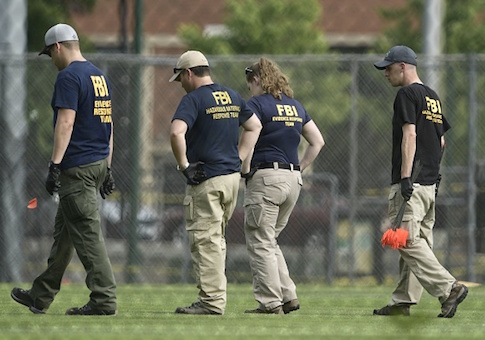A new FBI report on crime in the United States released Monday revealed that the violent crime rate increased in 38 out of 50 states in 2016.
Analysis of the FBI’s Uniform Crime Report (UCR) showed increases in violent crime ranging from under one to more than thirty percent across the United States. Vermont led in terms of increase in the violent crime rate—a 34 percent spike between 2015 and 2016. Following it was Hawaii, with a 24 percent increase. The next five highest states—Arizona, Illinois, Alabama, Wyoming, and Alaska—saw an increase of between 10 and 14 percent.
While some states saw only negligible increases—such as Pennsylvania, where crime went up just 0.32 percent—19 states saw an increase of 5 percent or more. Twelve states, as well as the District of Columbia, saw decreases in the violent crime rate. Florida topped that list, with a 7 percent drop in violent crime, followed by the District of Columbia with a 5 percent drop. Crime declined less than 5 percent in the remaining ten states.
The UCR, released annually, collects voluntarily submitted data from more than 16,000 police departments across the nation to capture the state of crime in America. The UCR found that overall violent crime increased by 3.4 percent in 2016, the Washington Free Beacon reported. The murder and nonnegligent manslaughter rate also increased, by 8.2 percent.
The 2016 UCR confirms what many experts already had surmised, that 2016 marks the second year in a row in which violent crime in the United States has increased. The multi-year increase indicates a possible reversal of the continuous decline in U.S. violent crime rates since the early 1990s, what noted criminologist Franklin E. Zimring called "the great American crime decline."
Attorney General Jeff Sessions has raised the alarm about this trend since taking office in February. In his first significant speech as attorney general, Sessions stressed his concern about the possibility of a "dangerous new trend" in violent crime.
"These numbers should trouble all of us," Sessions said. "My worry is that this is not a 'blip' or an anomaly, but the start of a dangerous new trend that could reverse the hard-won gains of the past four decades—gains that made America a safer and more prosperous place."
He repeated his concerns following the release of the UCR on Monday, insisting that, "For the sake of all Americans, we must confront and turn back the rising tide of violent crime. And we must do it together."
Critics have disagreed with Sessions, arguing that while crime has increased, those increases are largely localized to certain major cities, downplaying claims of a "national crime wave." The Brennan Center for Justice, a left-leaning public policy institute focused on criminal justice issues, used this analysis in its 2016 end-of-year crime review.
"Some cities are experiencing an increase in murder while other forms of crime remain relatively low. Concerns about a national crime wave are premature, but these trends suggest a need to understand how and why murder is increasing in these cities," wrote report authors Ames Grawert and James Cullen.
Grawert also downplayed the significance of the general increase in violent crime in Brennan's response to the release of the 2016 UCR, saying that "crime remains near historic lows, with an uptick in murder and violence driven in part by problems in some of our nation's largest cities."
"The latest data undercut claims of a national crime wave. But they make clear that work needs to be done to stop these troubling local spikes in violence, and persistently high rates of violent crime in a few major cities," said Mark Holden, general counsel and senior vice president at Koch Industries.
Brennan points to the city of Chicago, which is responsible for 20 percent of overall murder spike. But this emphasis—pointing to larger increases in cities and describing the growth in violent crime as "local spikes in violence"—belies the 40-state increase in violent crime.
The UCR also shows an increase in violent crime not only in cities, but also suburban and rural areas. While violent crime rose more in cities in 2016 by 4.3 percent, it is also up in suburban areas by 2.2 percent and "nonmetropolitan counties" by 1.6 percent.
The Justice Department recognized the nationwide reach of the violent crime increase, noting that, "these increases were nationwide, with the average violent crime rate increasing in cities over 250,000 in population, in cities under 10,000 in population, in suburban areas, and in every size in-between."
"The Department of Justice is committed to working with our state, local, and tribal partners across the country to deter violent crime, dismantle criminal organizations and gangs, stop the scourge of drug trafficking, and send a strong message to criminals that we will not surrender our communities to lawlessness and violence," Sessions said.
